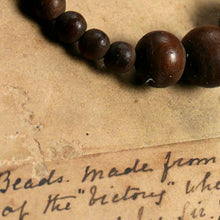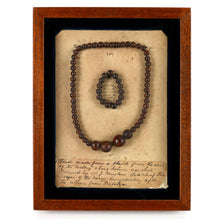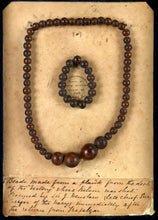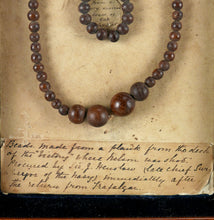HMS Victory - Beads From The Deck Where Nelson Fell, 1806
Adding product to your cart
Overal: 25cm (9.9in) x 19.5cm (7.6in)
String of graduated oak beads made from Victory oak mounted on cardboard applied with a paper label inscribed in ink, ’Beads made from a plank from the deck / of the “Victory” where Nelson was shot. / Procured by Sir J. Henslow (late chief Sur /-veyor of the Navy) immediately after the return from Trafalgar’; together with a small string of beads, labelled, ‘From a / very ancient / beam of / Oak / Rochester / Cathedral’.
Admiral Lord Nelson was pacing Victory’s quarterdeck at 1.15pm during the Battle of Trafalgar on 21 October 1805 when he was fatally shot through the shoulder by a French marine from the mizzen-top of the Redoubtable (80-guns). On Victory’s return to Chatham after Trafalgar she underwent an extensive refit whence present the relics found their way into Henslow’s possession
Sir John Henslow (1730–1815) was Chief Surveyor to the Navy, a post he held jointly or solely for 23 years from 1784 to 1806. At fifteen years old he was apprenticed to the naval architecture office of Sir Thomas Slade, the designer of HMS Victory (104-guns). A clever draughtsman, Henslow advanced to Master Boat Builder at Woolwich in 1762, then to posts in Chatham and Portsmouth naval dockyards, leading to his appointment as Assistant Surveyor of the Navy in 1771. He was twice married, firstly to a neice of Sir Thomas Slade. During his career he was responsible for the design of 156 naval vessels in a period when British sea power was increasingly asserting itself. He was knighted in 1793.












